#stegodon
Explore tagged Tumblr posts
Text

Here the result from the Pleistocene Flores #paleostream! This land, stuck between Sundaland and Australia revealed a fascinating fossil assemblage over the last few decades.

Dwarfed Stegodon, giant rats. huge marabou storks and komodo dragons are the most prominent members of the late Pleistocene fauna. Of these only the giant rats are still to be found on Flores.


Flores wasn't much of a household name in paleontology until 2004 - I remember it well - when a astonishing discovery was announced from the cave Liang Bua. Among the many animal remains were stone tools and surprisingly small hominin remains. After a lot of debate this would eventually be known as Homo floresiensis, a human species standing not much taller than 1 m. Little is known about this species. Especially it's cultural expressions and technological advances are the topic of many discussions and speculation.

One aspect that is rarely brought up in discussions around Flores are the birds, yes storks and vultures are popular but there is a huge number of living and fossil species found in these sites. As you can see in this size chart by Discord member JW there are still many interesting compositions to put together here. One thing that was important to me with this image was: 1. not to make it a dense jungle piece, and 2. not that make it a Stegodon hunting scene; that has been done too many times. The cave deposits at Liang Bua suggest that...


H. floresiensis inhabited this site especially during dryer intervals that would probably correlate with more open environments like the Lesser Sundas deciduous forests and savannas.
402 notes
·
View notes
Text
Time Travel Question 76: 20th Century and Earlier III
These Questions are the result of suggestions from the previous iteration.
This category may include suggestions made too late to fall into the correct grouping.
Please add new suggestions below if you have them for future consideration.
#Time Travel#Paleolithic cultures#Gulf of Thailand#Paleolithic#Asian History#Gustav Klimt#Art history#1920's#Paris#Gertrude Stein#Alice B. Toklas#Hemingway#Fitzgerald#Claude Cahun#Suzanne Malherbe#Queer History#Nonbinary#Sapphic History#Trans history#Art History#Dwarf Elephant#Stegodon#Prehistory#the Philippines#Indonesia#NYC#New York#1890's#20th Century#Chinese History
45 notes
·
View notes
Text

Zuruzla
Altura: 206.4 metros
Longitud: 648 metros
Peso: 170,000 toneladas
Primer Avistamiento: Tokio [Tierra: Teratoverso]
Controles: Fuego Control [Aliento Electrico] Agua Control [Nado, trompa rociadora] Energia Control [Rayo de Energía] Tierra Control [Excavación]
Guarida: Lago Kitayama [Tierra: Teratoverso] Ciudad Republica [Avatarverso]
Aspecto: Godzilla 2014 + Stegodon (cabeza) + Zuruzla (Ultraman 80)
Aliados: Aang
Humanos:
Kaijus y otras bestias: Gomora, Telesdon, Jirass
Enemigos:
Humanos: Aang, Katara, Soka, Iroh, Zuko, Ozai y Azula
Kaijus y otras bestias: King Ghidorah, Godzilla (ocasionalmente), Anguirus, King Kong (frecuentemente), Mothra, Rodan
#avatar aang#avatar: the last airbender#avatarverse#tokusatsu#tsuburaya productions#showa era#monsterverse#godzilla king of the monsters#godzilla#tokusastu#ultraman 80#stegodon#zuruzla
3 notes
·
View notes
Text
Beneath the waves of Indonesia’s Madura Strait, scientists uncovered a 140,000-year-old glimpse into Sundaland—a lost world where Homo erectus hunted deer and massive Stegodon roamed.
#Homo erectus#Madura Strait#Indonesia#underwater archaeology#Middle Pleistocene#Solo River#Stegodon#early humans#Southeast Asia#fossils
0 notes
Text

Luneta Stegodon sculpture couplefie
My daughter and I posing with a concrete sculpture of a prehistoric Philippine Stegodon at the Children's Playground, in Luneta Park, Manila.
The Stegodons are extinct elephantine animals that roamed Africa and Asia around 11.6 million years ago to late Pleistocene. Stegodons belong to the now extinct family Stegodontidae of order Proboscidae; which is different from the family of Elephantidae that modern elephants belong to or the extinct family of Mammutidae of the mastodons.
In the Philippine archipelago, there are four species of stegodons that have been identified:
Stegodon cf. trigonocephalus
Stegodon cf. sinensis
Stegodon luzonensis
Stegodon mindanensis
While the Stegodon trigonocephalus and the Stegodon cf. sinensis were also discovered around other islands in Southeast Asia, the Stegodon luzonensis and Stegodon mindanensis are endemic to the Philippines.
There was also the Elephas beyeri, a dwarf elephant that went extinct in Luzon.
The sculpture of the Stegodon along with other prehistoric creatures was created by the artist Jose Malat Mendoza (born 1939), in 1968 during the development Children's Playground.
This picture was taken circa 2009
Postscript:
This post is in memoriam to Vishwa Ma'ali, the Asiatic Elephant (Elephas maximus) that passed away last 2023 at the Manila Zoological and Botanical Garden. Vishwa Ma'ali was given to the Manila Zoo by the government of Sri Lanka in 1977, and she was presumed to be around 43 to 49 years old upon her death.
#filipinotraveler#travel#history#creaturefeature#philippines#stegodon#philippinefauna#lunetapark#rizalpark#childrenspark#manila
0 notes
Text
Unraveling the Mystery of Flores Man
via Discover, 22 September 2023: The Flores Hobbits, ancient humanoids on Flores Island, spark debate on their current existence. Most researchers say they're likely extinct.
via Discover, 22 September 2023: The ancient remains of Homo floresiensis, colloquially known as the Flores Hobbits, were discovered on the Indonesian island of Flores. These humanoids stood just under 4 feet tall and lived between 100,000 to 60,000 years ago. While some claim there have been recent sightings, the consensus among researchers is that it’s unlikely they still exist today. Hobbits…

View On WordPress
0 notes
Text
There is a replica of an Edo period reconstruction of a dragon in the Lake Biwa museum in Shiga Prefecture, Japan.


It's actually made of the bones of an elephant relative, Stegodon orientalis. The horns come from some bovid (I think).
I find it immensely interesting nevertheless to think of dragons as living creatures. Not just living, but as these anatomically screwed things.
It also resembles a particular thunder serpent.
PLEASE NORMALISE FUCKED UP DRAGONS!
6 notes
·
View notes
Text
Bomberman Mounts & Charaboms


(the creatures are riding the mounts) (Super Bomberman 2)

Louies (Bomberman '94)

Motobomber (Bomberman GB)

Louies (Super Bomberman 3)
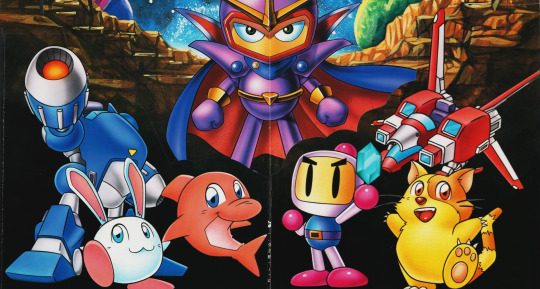
Mounts (Virtual Bomber); From Left to Right: Launcher Armor, Deebo, Rick, Nyanjirou, Lock-On Armor
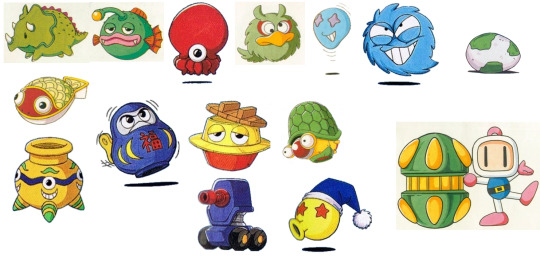
Super Bomberman 4 Mounts Organics (Trikeradops, Angora, Swim, Haguhagu, Crazy Balloon, Bobo) Mechanical (Ponpon, Dogun Jr, Daruman, Pakkunga, Bomb Tank, Gamefry, Dancing Clown)

Tirras + Bonus Kepo & Dr. Ein (Saturn Bomberman)

Motobomber Mk. 1-4 (Bomberman GB 3)
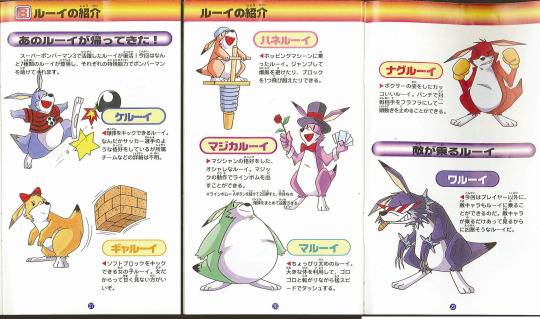
Super Bomberman 5 Louies (Top to Bottom, then left to right): Kerooi, Gyarooi, Hanerooi, Magicarooi, Marooi, Nagurooi, Warooi
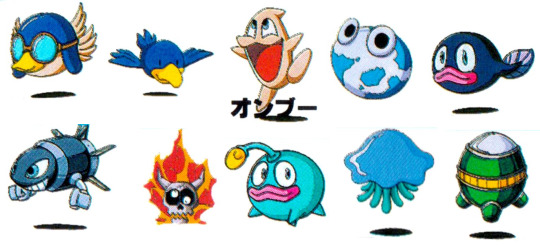
Neo Bomberman Mounts: Organic: Dachon, Torisan, Ombu, Tamagon, Baketama Mechanical: Dokyuun, Gaikottsu, Charge, Nucha, Ridge-Razor
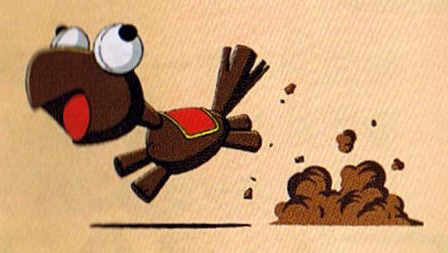
White Horse (Saturn Bomberman Fight)

Bomberman World Mounts (Teebo, Launcher Armor, Rick, Nyanjirou, Rick, Lock-On Armor)
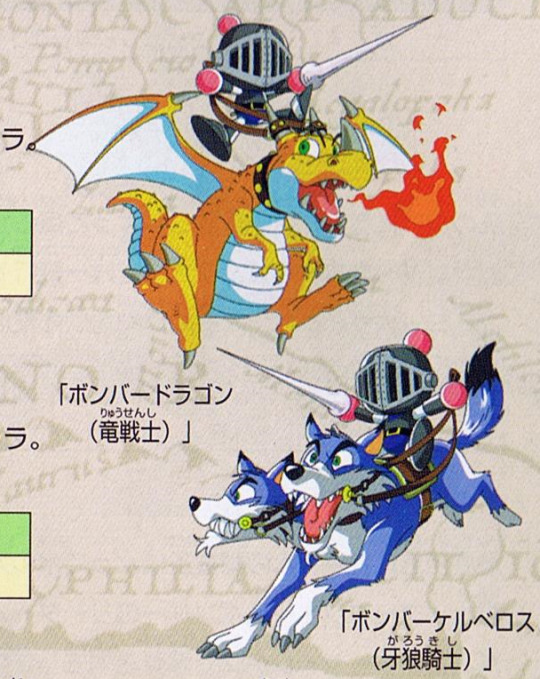
Bomber Dragon & Bomber Cerebus (Bomberman Wars)

Louie (Bomberman Hero)


Bomberman Fantasy Race Louies & Tirras: Louies (Green Louie, Hopping Louie, Tri-Louie, Soaring Louie, Hyper Louie, Black Louie) Tirras (Tirra, Brave Tirra, Flying Tirra, Mighty Tirra, Super Tirra, King Tirra)

Bomberman Party Edition Mounts (Louies, Pytera, Simeon, Drakko, Kai-Man, Dox)
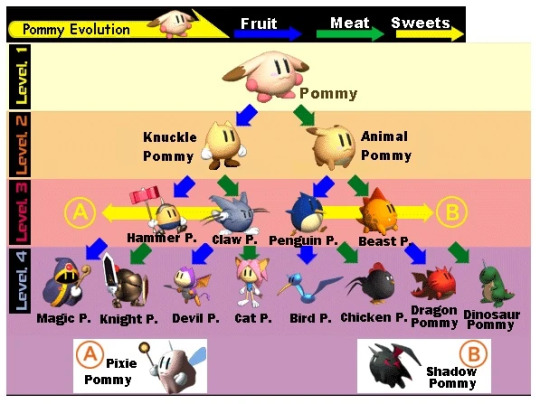
Pommy (Bomberman 64: The Second Attack)
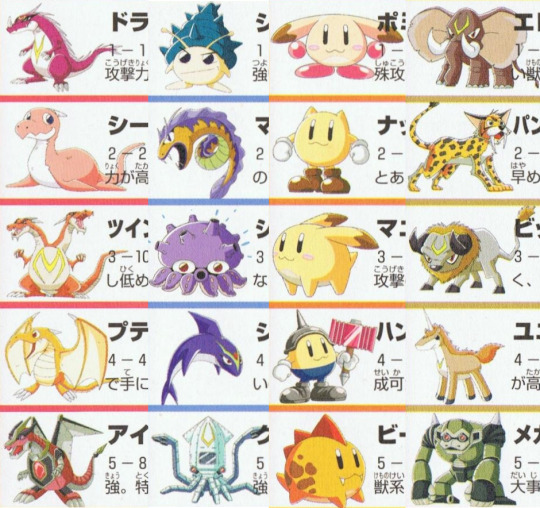


Bomberman Max Charaboms (Left to Right, Top to Bottom, Image per Image): Draco, Kai-Man, Pommy, Elephan, Seadran, Marine-Eel, Knuckle Pommy, Panther Fang, Twin Dragon, Sea Balloon, Animal Pommy, Big Ox, Pteradon, Sharkun, Hammer Pommy, Unicornos, Iron Dragon, Iron Squid, Beast Pommy, Mecha Kong, Aqua Dragon, Pommy Dragon, Thunder Kong, Thunder Shark, Rock Snakey, Fire Force, Shardra, Ox Battra, Heat Rock, Oct Kong)
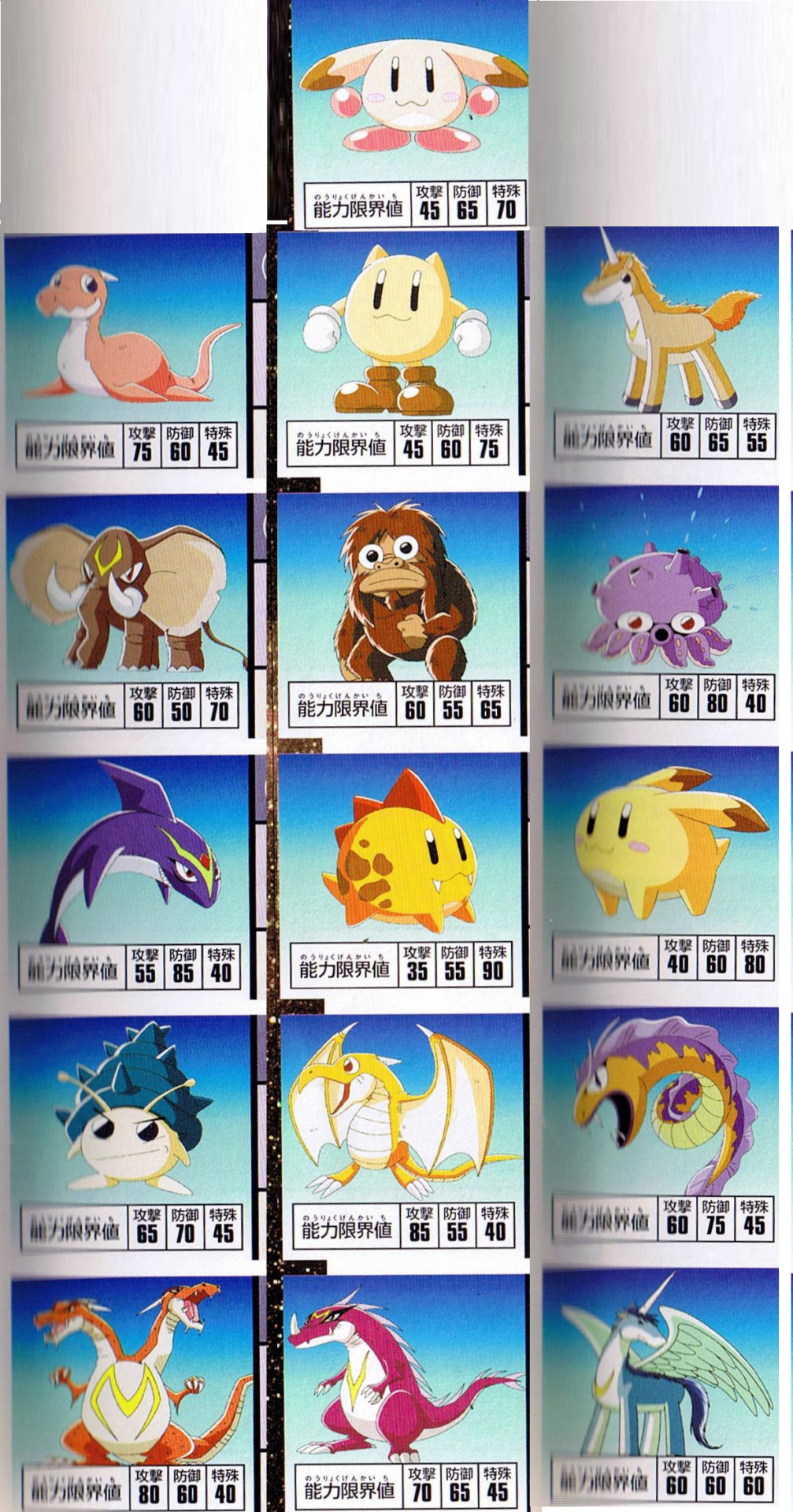

Bomberman Tournament Charaboms (Top to Bottom Left to Right, Image per Image): Pommy, Seadran, Elephan, Sharkun, Kai-Man, Twin Dragon, Knuckle Pommy, ToughGuy, Beast Pommy, Pteradon, Draco, Unicornos, Sea Balloon, Animal Pommy, Marine-Eel, Youni, Pommy Fangs, Pommy Sea, Pommy Dragon, Seawing, Maringon, Fire Kong, Thunder Liger, Elekong, Kameking)
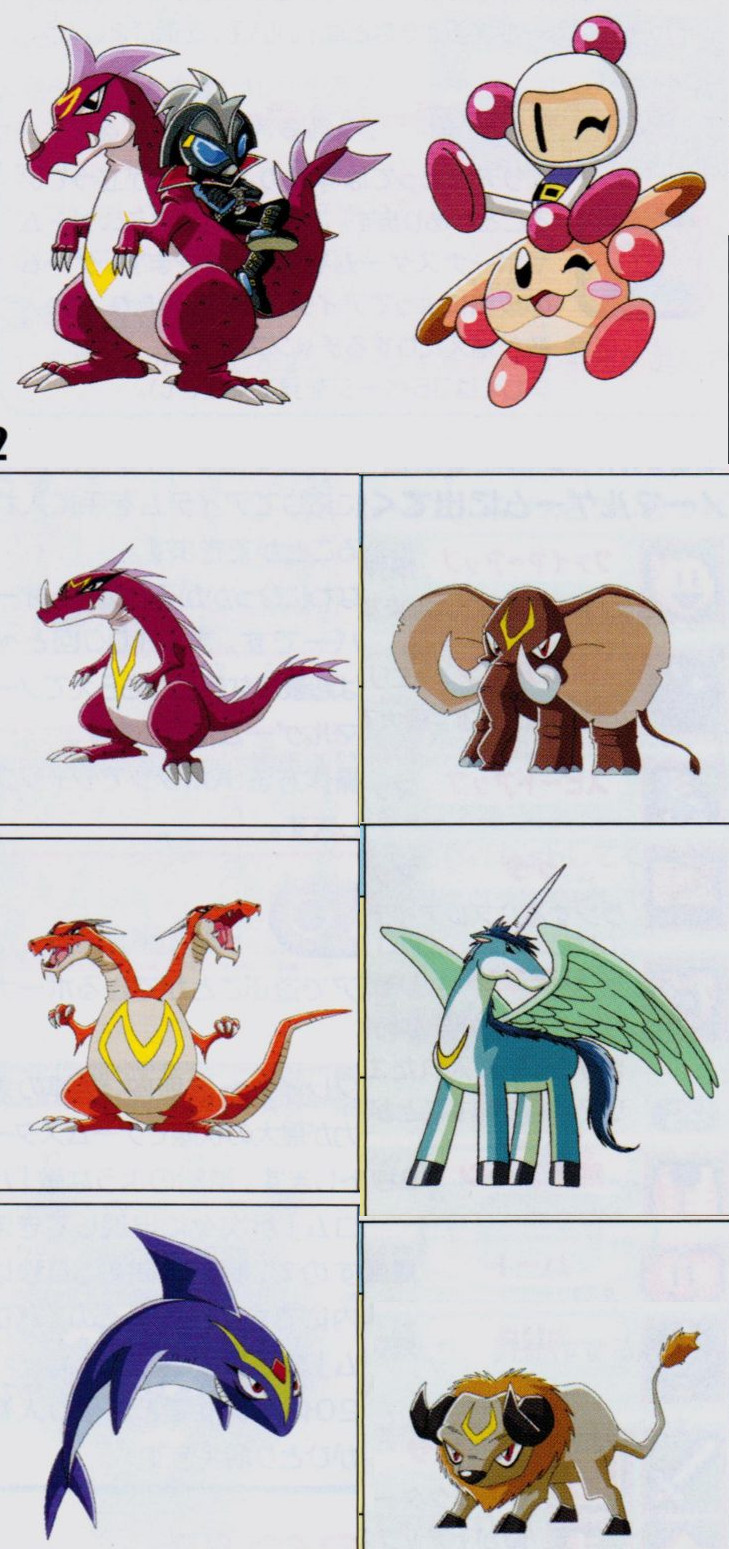
Bomberman Max 2 Charaboms (2d Art, Left to Right): Draco (+ Max), Pommy (+ Bomberman), Draco, Elephan, Twin Dragon, Youni, Sharkun, Big Ox

Bomberman Max 2 Charaboms (Sprites, Left to Right): Draco, Seadran, Twin Dragon, Pteradon, Stegodon, Sea Balloon, Sharkun, Kai-Man, Seapony, Anglar, Pommy, Pommy Claw, Animal Pommy, Pommy Hen, Beast Pommy, Elephan, Rhinon, Youni, ToughGuy, Big Ox, Shargon, Pommy Dragon, Pommy Fangs, Sparkun, Rhinaus, Elephandon, Kameking, Thunder Liger, FlyShark, Elemouse
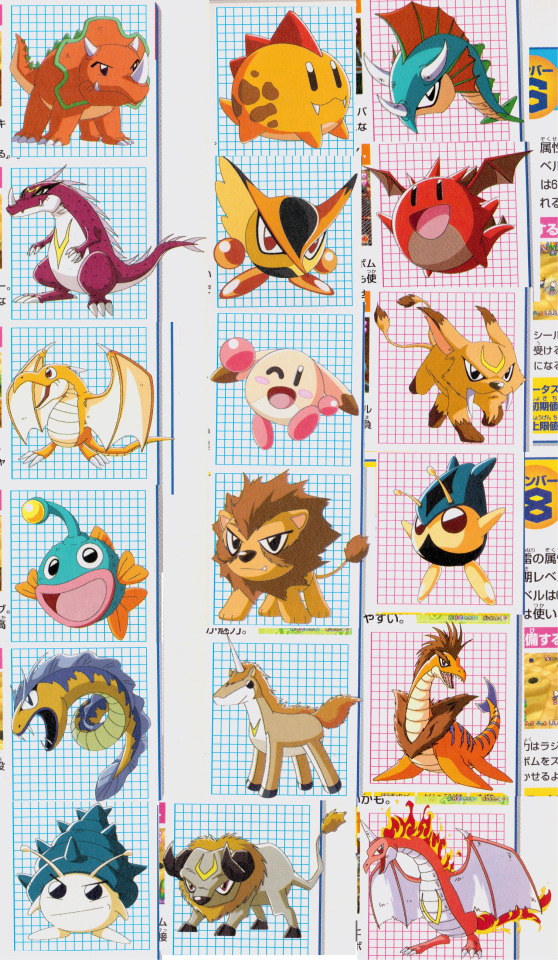
Bomberman Generation Charaboms (Top to Bottom, Left to Right): Stegodon, Draco, Pteradon, Anglar, Marine-Eel, Kai-Man, Beast Pommy, Nox/Pokes, Pommy, Ligon, Unicornos, Big Ox, Angol, Pommy Dragon, Pomyugar, Lai-Eel, Fire Horn)
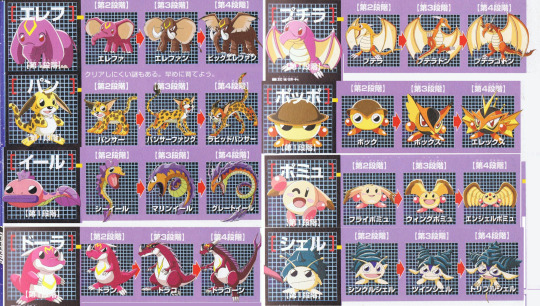
Bomberman Jetters: Legend of Bomberman Charaboms: (Elifphu, Elipha, Eliphan, Big Elephan, Pan, Panther, Panther Fang, Rapid Panther, Eel, Sheel, Marine-Eel, Dra, Drac, Draco, Dracon, Great Eel, Budu, Ptera, Pteradon, Pteragudon, Popo, Poke, Nox/Pokes, Elks, Pommy, Fly Pommy, Wind Pommy, Angel Pommy, Kai-Man, Songuru-Man, Twinkai-Man, Torpedo-Man)

Bomberman Jetters (Game) Charaboms (Manual Artwork): Sharkun, Nox, Pommy, Pommy, Dragon, Seadran, & Draco (+ evos)

Bomberman Jetters (Game) Charaboms (sprites): Sharkun, Sparkun, Kai-Man, Pommy, Nox, Pommy Dragon, Seadran, Draco, Elephan, ToughGuy, & Unicornos (+ Evos)
#bomberman#charaboms#pommy#super bomberman 2#bomberman '94#louie#motobomber#bomberman gb#super bomberman 3#virtual bomberman#super bomberman 4#saturn bomberman#tirra#bomberman gb3#super bomberman 5#neo bomberman#saturn bomberman fight!!#bomberman world#bomberman wars#bomberman 64: The Second Attack#Bomberman Max#Bomberman Tournament#Bomberman Max 2#Bomberman Generation#Bomberman Jetters: Legend of Bomberman#Bomberman Jetters
12 notes
·
View notes
Note
Satan, what are your top 5 favorite dinosaurs?
"Ankylosaurus, pachycephalosaurus, stegodon, triceratops, velociraptor."
"Honorable mention to the iguanadon for having spiked thumbs to shank people with."
1 note
·
View note
Text
Two-for-one special for @xeeble Faketober today bc I had art block yesterday!


Day 16 - Ancient
Pebblescid (Rock) and Proboulscid (Rock/Fighting)
The Rocky Tusk Pokémon
These come from a Tusk Fossil and are based on Stegodons! Proboulscid protects Pebblescid but is also impulsive.

Day 17 - Pikaclone
Tikuji (Electric/Rock)
Based on the edented Sulawesi rat (Paucidentomys vermidax)! Name comes from "tikus" (Indonesian for rodent) and 磁 "ji" (Japanese for magnet)
[click here for my faketober tag!]
3 notes
·
View notes
Text

🔎 Looking for a cool spot to escape the heat? We got you! Check out these 6 stunning and unique caves picked as Must-Seek destinations by TAT.
Add them to your bucket list NOW:
✅ Nam Lod Cave, Mae Hong Son
✅ Blue Cave, Tak
✅ Khao Daeng Nam Lod Cave, Phatthalung
✅ Phung Chang Cave, Phang Nga
✅ Stegodon Cave, Satun
✅ Phu Pha Phet Cave, Satun
💬 Before you travel, always make sure to check the opening hours of the places you’re planning to visit.
Dive into more Thai travel inspo at 👉 www.tourismthailand.org
#AmazingThailand#YourStoriesNeverEnd#สุขทันทีที่เที่ยวไทย#TravelThailand#AmazingThailandGrandTourismandSportsYear2025
1 note
·
View note
Text

Ganesha
Altura: 204 a 240 metros
Longitud: 408 a 500 metros
Peso: 100,000 toneladas
Primer Avistamiento: Nueva Delhi [Tierra: Teratoverso]
Controles: Tierra Control [Excavación, Embestida Petrea] Fuego Control [Rayo Incandescente] Energia Control [Luminosidad]
Guarida: Himalayas [Tierra:Teratoverso] Monte Makapu [Avatarverso]
Aspecto: Stegodon
Aliados:
Humanos: Aang, Katara, Soka, Iroh, Zuko, Toph
Kaijus y otras bestias: Godzilla, King Kong, Mothra, Rodan, Anguirus
Enemigos:
Humanos: Ozai y Azula
Kaijus y otras bestias: Kasai Rex
#avatar aang#avatar: the last airbender#avatarverse#kaiju#tokusatsu#indian mythology#stegodon#ganesha#hinduism
0 notes
Photo

Stegodon elephantoides (Woodyaan)
“The strange looking stegodon is an elephant species with tusks so tightly placed together, their trunks sorta… awkwardly flop over them to one side. These are highly social and intelligent animals, like most elephants, and herds are known to create their own meadows in the jungle in pursuit of browse to eat.”
“Dran remembers this one. For Recognition Hunt many years back, good strategy, failed execution.”
-Dran
“Bani likes to watch them sometimes. Bani asks Jih to join, but he never does.”
-Bani
15 notes
·
View notes
Text

Luneta concrete hippo sculpture couplefie
My daughter and I sitting inside the maw of a gigantic concrete hippopotamus at the Children's Playground in the Luneta Park, Manila. Although the modern hippopotamus (Hippopotamus amphibius) is a very large animal that maxes at 4,500 kilograms (9,920 lbs.) and stands at 1.5 meters (5 feet) tall at the shoulder, it is never ever able to reach the exaggerated size of this sculpture. In fact the sculpture is even bigger than the largest known hippo; which is the extinct Hippopotamus gorgops with the approximate weight of 5 metric tons (11,000 lbs.) and the height of 2.1 meters (6 feet 11 inches).
In the Philippines, the current largest land mammals are the Tamaraw (Bubalus mindorensis) and Carabao (domestic water buffalo / Bubalus bubalis). But these animals do not compare to the giant extinct fauna that roamed the Philippine archipelago.
We had four extinct species of Stegodons in our islands:
Stegodon trigonocephalus and Stegodon cf. sinensis of Southeast Asia
Stegodon luzonensis and Stegodon mindanensis that are endemic to the Philippines
Other extinct “mega-fauna” discovered in our shores are the:
Luzon Giant Tortoise (Megalochelys sondaari)
Four species of elephant: Palaeoxodon sp., Elephas namadicus, Elephas cf. namadicus, and Elephas sp.
Philippine rhino (Rhinoceros philippinensis / Nesorhinus philippinensis)
Philippine Giant boar (Celebochoerus cagayanensis)
The giant hippo sculpture at the Luneta Children's Playground was created by a team led by artist Jose Malat Mendoza (born 1939) in 1968.
This picture was taken circa 2009
#filipinotraveler#travel#history#creaturefeature#philippines#rizalpark#manila#megafauna#hippo#sculpture#lunetapark
0 notes
Text

Once upon a time, long, long ago, the cousins of elephants once roamed the Philippines. A Stegodon was the first large fossil mammal to be scientifically reported in the country. It was found in 1860, and was thought to have weighed about 400 kg, making it a dwarf stegodon. Stegodons had longer tusks than the elephants of today, and they were so close together that the trunk had to lean to one side of both of them! So far, 4 Philippine Stegadon species have been identified. Read more from the National Museum of the Philippines Facebook page search for Stegodon mindanensis, with text by Jiles Arvin A. Vergara. Artprint: https://society6.com/product/philippine-stegodon-on-undas-or-dia-de-los-muertos_print
#SpiritsOfSpecies#ExtinctNotForgotten#Stegodon#Elephant#Undas#Philippines#Filipino#Extinct#Pleistocene
10 notes
·
View notes